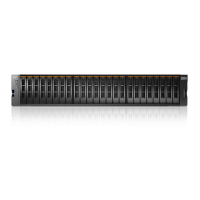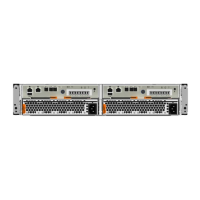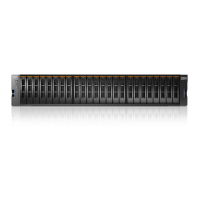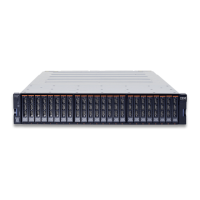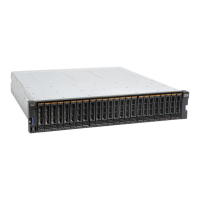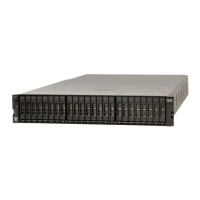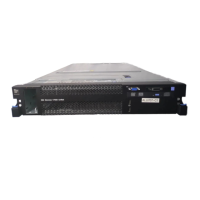438 Implementing the IBM Storwize V5000 Gen2 with IBM Spectrum Virtualize V8.1
9.1 Introduction
In modern and complex application environments, the increasing and often unpredictable
demands for storage capacity and performance, lead to planning and optimization issues
related to storage resources.
Consider the following typical storage management issues:
Usually when a storage system is implemented, only a portion of the configurable physical
capacity is deployed. When the storage system runs out of its initial installed capacity and
more capacity becomes necessary, a hardware upgrade is implemented to add physical
resources to the storage system. This new physical capacity can hardly be configured to
keep an even spread of the overall storage resources.
Typically, the new capacity is allocated to fulfill only new storage requests. The existing
storage allocations do not benefit from the new physical resources. Similarly, the new
storage requests do not benefit from the existing resources. Only new resources are used.
In a complex production environment, it is not always possible to optimize storage
allocation for performance. The unpredictable rate of storage growth and the fluctuations
in throughput requirements, which are input/output (I/O) operations per second (IOPS),
often lead to inadequate performance.
Furthermore, the tendency to use even larger volumes to simplify storage management
works against the granularity of storage allocation, and a cost-efficient storage tiering
solution becomes difficult to achieve. With the introduction of high-performing
technologies, such as Flash drives or all-flash arrays, this challenge becomes even more
important.
The move to larger and larger physical disk drive capacities means that previous access
densities that were achieved with low-capacity drives can no longer be sustained.
Any business has applications that are more critical than others and there is a need for
specific application optimization. Therefore, the ability to relocate specific application data
to a faster storage media is required.
Although more servers are purchased with internal SSD drives attached for better
application response time, the data distribution across these internal SSD drives and
external storage arrays must be carefully planned. An integrated and automated approach
is crucial to achieve performance improvement without compromising data consistency,
especially in a disaster recovery (DR) situation.
All of these issues deal with data placement, relocation capabilities or data volume reduction.
Most of these challenges can be managed by having spare resources available, by moving
data and by using data mobility tools or operating systems features (such as host level
mirroring) to optimize storage configurations.
However, all of these corrective actions are expensive in terms of hardware resources, labor,
and service availability. Relocating data among the physical storage resources that
dynamically or effectively reduces the amount of data, transparently to the attached host
systems, is becoming increasingly important.
